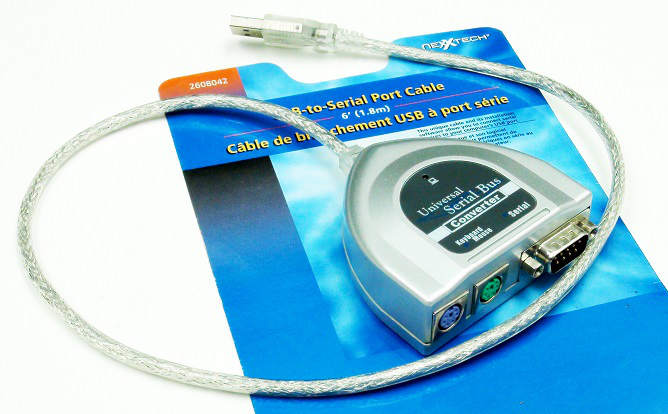In our technical articles library and a recent
video, we have examined the process of connecting a notebook computer to the 914 Turbocharger Control Unit so that you may calibrate or monitor it using the appropriate TLR software packages. This is not a difficult task, and connection is generally painless when using a computer that is equipped with a "standard" DB9 RS-232 serial port.
However, most modern notebook computers are no longer equipped with a serial port. Thus, to connect such a machine to the TCU, it is necessary to have an intermediary: typically a "USB-to-Serial-Port-Adapter". (Bluetooth-to-Serial-Port adapters also exist, but they are very expensive - and Bluetooth is not yet as ubiquitous as the common USB port.)
So, that seems simple enough - the obvious solution is a standard USB-to-Serial adapter cable. After all, serial ports are "standard", right?
Actually, the RS-232 serial port "standard" is not exactly 100% standard in its implementation. "RS" stands for 'recommended standard' and there are numerous deviations from the recommendation. The EIA232 document published by the Electronic Industries Association describes 14 permissible configurations of the original 22-signal standard. Each configuration uses a subset of the 22 defined signals, and serves a more limited communications requirement than that suggested by using all the available 22-signals. So not surprisingly, various kinds of 'RS-232' equipment (like the 914 Turbocharger Control Unit) do not always see eye-to-eye with every "USB-to-Serial-Port-Adapter" out there.
We've done quite a lot of testing, and discovered a general trend. Although every USB-to-Serial-Port-Adapter we have tested has invariably installed correctly, and reported itself to be functioning correctly in the operating system, a good percentage of them simply cannot talk to the 914 TCU. Everything looks good, you fire up the TCU software, it finds the port OK, and then you press "Monitor" - and after a couple of second's delay - you get the "ERROR: SERIAL I/O" message.
What we have found is that there currently are two very popular "Chipsets" used in modern "USB-to-Serial-Port-Adapters". One is the "Prolific" chipset - and all of the adapters we have tested that are based on the Prolific chipset CANNOT communicate with the ROTAX TCU. They may work perfectly fine with other 'serial' devices, but they don't play well with ROTAX. (An example would be the Tripp-Lite U209 - connects fine to our UPS, but verified useless with the ROTAX TCU.)
The other popular chipset is known as "FTDI" - and so far all of the FTDI-based USB-to-Serial-Port-Adapters we have tested work perfectly with the ROTAX TCU.
The adapters that we have mostly relied upon over the past few years were the NEXTTECH Model 2608042.
Unfortunately, these excellent devices have gone out of production and are becoming very rare.
Luckily, there are other FTDI-based adapters that are still widely available, and we can confirm that the SABRENT model SBT-FTDI is 100% compatible with the ROTAX 914 TCU. Its driver installs automatically (and performs flawlessly) in both Windows 7 and Windows 8.1
You can purchase these from a wide variety of sources - see this link.
Numerous other "FTDI-based" products are available, and the odds are good that any of these would also be compatible with your 914 TCU. However, most of them are somewhat more expensive, and we haven't yet tested all of them. You can read about some of these alternatives here.
We're satisfied with the Sabrent SBT-FTDI, and as long as they remain widely available, we'll continue to recommend them to ROTAX 914 users . At any given time, AMAZON usually has a few FTDI adapters available (CLICK HERE) - we have recently tested the UGREEN ones, and they work just fine.

